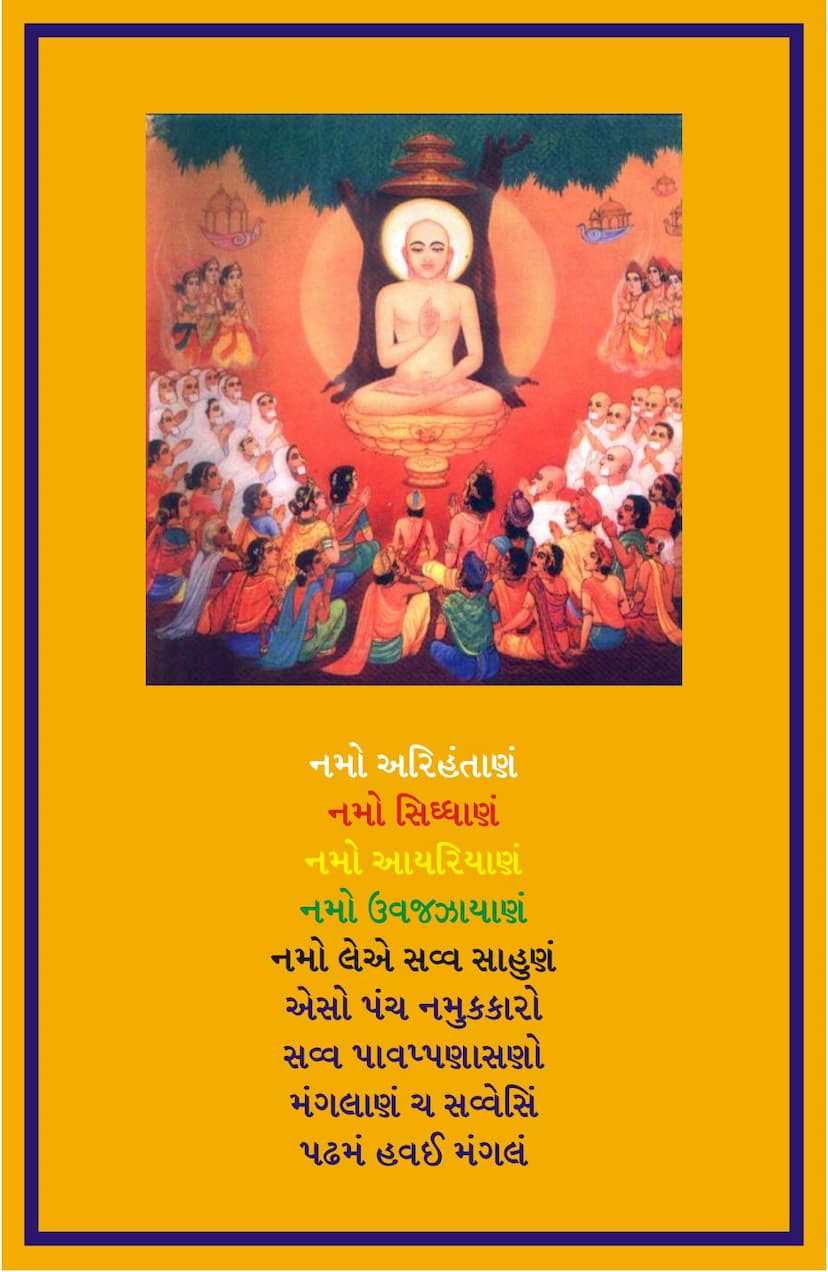Agam 16 Upang 05 Surya Pragnapti Sutra Part 01 Sthanakvasi Gujarati
Added to library: September 1, 2025

Summary
Here's a comprehensive summary of the provided Jain text, "Agam 16 Upang 05 Surya Pragnapti Sutra Part 01":
Book Title: Agam 16 Upang 05 Surya Pragnapti Sutra Part 01 Author: Ghasilal Maharaj Publisher: A B Shwetambar Sthanakvasi Jain Shastroddhar Samiti
This text is the first part of the Surya Pragnapti Sutra, an important Jain scripture, presented with a commentary by Ghasilal Maharaj. The text is primarily in Gujarati and Sanskrit, with some Prakrit elements, and offers a deep dive into astronomical and cosmological concepts within Jainism, particularly focusing on the Sun and its movements, as well as the celestial framework.
Key Themes and Content:
-
Mangalacharan (Invocation): The text begins with the traditional Jain invocation, "Namo Arihantanam...". This is followed by tributes to the lineage of spiritual teachers and mentors.
-
Purpose and Commentary: The commentary, titled "Suryajnyaptiprakashika," aims to illuminate the profound meanings of the Surya Pragnapti Sutra. The author, Ghasilal Maharaj, expresses his devotion and purpose in bringing this knowledge to light.
-
Astrological and Cosmological Framework: The core of the text delves into the Jain understanding of the cosmos, focusing on:
- The Sun (Surya): Its movement, its perceived forms, and its role in the celestial arrangement.
- Celestial Bodies and Regions: Discussions about the Sun's journey through various "mandals" (celestial circles or regions), their size, structure, and the phenomena associated with them.
- Time and Cycles: The text explains the intricate calculations of time, including "muhurts" (a unit of time), days, nights, lunar and solar months, and their interrelations within larger cosmic cycles.
- The Nature of Light and Shadow: Concepts like "leshya" (a subtle karmic matter that colors the soul) are applied to celestial bodies and their interaction with light and shadow ("chhaya") are discussed.
-
Detailed Astronomical Calculations and Theories: The commentary meticulously explains:
- Celestial Movements: The author provides detailed explanations of the Sun's path, including its daily and seasonal movements, and how it traverses different celestial regions ("mandals").
- Measurements and Dimensions: The text presents specific measurements in "yojanas" (a unit of distance) for various celestial phenomena, including the dimensions of celestial bodies, their paths, and the extent of their influence.
- Theories of Celestial Mechanics: The author attempts to reconcile astronomical observations with Jain philosophical principles, explaining concepts like "vikampan" (movement or oscillation) and the interactions between celestial bodies.
-
Debates and Multiple Perspectives (Pāramatva): A significant portion of the text is dedicated to presenting and refuting various non-Jain or heterodox views ("pāramatva") regarding celestial phenomena. The author meticulously outlines these differing opinions (often attributed to different schools of thought or philosophers) and then offers the Jain perspective, demonstrating the logical and scriptural basis for the Jain cosmology. This is particularly evident in the discussions about the Sun's trajectory, the nature of its light, and the shapes of celestial bodies.
-
Detailed Breakdown of Concepts: The text is structured into "Prabhuta" (sections) and "Prabhuta-Prabhuta" (sub-sections), systematically exploring different facets of the Surya Pragnapti Sutra. The commentary provides explanations for concepts like:
- Nakshatras (Lunar Mansions): Their names, their associated deities, their respective "gatis" (movements), and their cyclical relationships with celestial bodies.
- Tithis (Lunar Days): The names and the process of their formation, linking them to the phases of the Moon and the influence of Nakshatras.
- The Nature of Time: Discussions on "Anuyoga" (a system of classifying time periods) like "utsarpini" (ascending time cycle) and "avasarpini" (descending time cycle) further illustrate the cosmic scale.
-
Emphasis on Vinaya (Respectful Conduct): Towards the end of the first part, there's a special instruction regarding the recitation of the "mulpaath" (original text). It outlines specific times for study and periods of "asvādhyāya" (times when study is not permitted), often due to celestial or terrestrial phenomena, and emphasizes adhering to the guidance of elders or gurus during such times.
-
Inclusion of Gujarati and Hindi Translations: The text clearly indicates that it includes translations into Gujarati and Hindi, making it accessible to a wider audience interested in Jain scriptures.
-
Catalog and Publisher Information: The provision of a catalog link (jainqq.org) and publisher details aids in identifying and accessing the source material.
Overall Significance:
The "Surya Pragnapti Sutra Part 01" with Ghasilal Maharaj's commentary serves as a foundational text for understanding Jain astronomy. It highlights the Jain emphasis on meticulous observation, logical reasoning, and deep philosophical underpinnings even in the study of celestial mechanics. The work reveals a sophisticated understanding of time, space, and the cosmos within the Jain tradition, meticulously documented and explained for the edification of its followers. The commentary's detailed explanations aim to clarify complex concepts and refute alternative views, reinforcing the scriptural authority of Jain teachings.